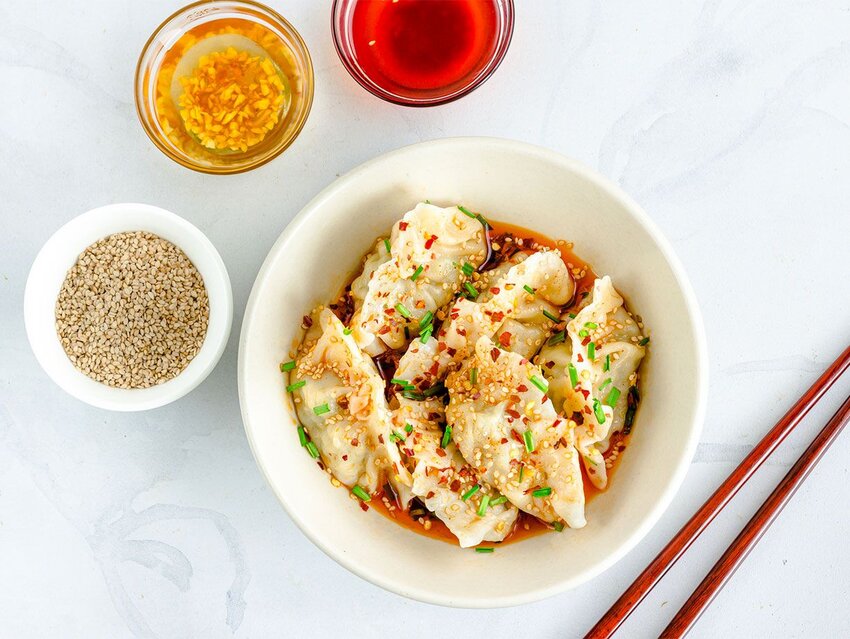The definition of “dumpling” is pretty simple: “A small savory ball of dough, which may be boiled, fried, or baked in a casserole.” But then there’s a clarification in the dictionary, specifically relating to East Asian cuisine: “A small item of food consisting of a thin sheet of dough wrapped around a savory filling and cooked by steaming or frying.” And then there’s another one for sweet dumplings: “A dessert consisting of apples or other fruit enclosed in a sweet dough and baked.”
Maybe dumplings aren’t so simple after all. The umbrella of “dumpling” is large, and the shape, wrapper, filling, and cooking methods vary deliciously. The English word “dumpling” dates to 1600, but the first record of a food that fits the bill comes from ancient Greece, and the many kinds of dumplings from around the world suggest various early origin paths. There are also different names in different languages: har gao, pierogi, pelmeni, tortellini, ravioli, manti, khinkali, kreplach, mandu, shumai, momo, and more.
East Asian Cuisine Dumplings
In the United States, Chinese restaurant menus usually list wonton soup and potstickers, but the Mandarin name for potstickers is guotie. They are usually made with meat and cabbage fillings, and the dumplings are steamed, while the bottoms are crisped on the surface of the pan — hence the Anglicized “potsticker” name. In Vietnamese cuisine, a tapioca wrapper enclosing pork and shrimp turns translucent when steamed: bahn bot loc. Gyoza is a Japanese dumpling, and jiaozi is the Mandarin version (the guotie without the crisped side). Xiao long bao, from Shanghai, contains soup. Plump Tibetan momo are often served in a meaty broth. Mandu, from Korea, have two levels of wrapping, like a flower.
Potato Heads
Dumplings need not always involve a flour dough. Italian gnocchi, made mostly of potato, can be considered a dumpling too (although some might protest that it doesn’t contain a filling). The Swedish make pitepalt, a potato wrapping filled with pork and bacon and served with lingonberry jam. The German kartoffelknödel are simple seasoned potato spheres, and the pierogi is a Polish dumpling made with a flour dough but traditionally filled with potato and cheese.
Sweet Treats
Czechs wrap up whole pieces of apricot and peach in svestkove knedily, which are boiled, soaked in butter, and topped with poppy seeds or cheese. The Amish wrap pie dough around cooked apple spiced with cinnamon, and fry it until golden. Half-moon-shaped ‘mpanatigghi from Sicily contain minced meat mixed with chocolate and other sweet ingredients.
Polish pierogi can also be sweet, filled with cheese or fruit, and served with applesauce and sour cream. Varenyky, the Ukrainian version, may be stuffed with cherries as a dessert.
Unfilled Dumplings
Here’s an existential question for dumpling fans: Are unfilled variations really just chubby noodles?
In the Southern classic chicken with dumplings, the dumplings are solely dough dropped in broth. Pinkaso, from Ghana, look like doughnuts. Hungarian nokedli, German spaetzle, and Swiss knoepfle are boiled egg batters. Matzo balls, a Jewish variation, contain eggs and matzo meal, a ground-up unleavened bread linked to the Passover holiday. Some purists might claim dumplings need a filling, but by dictionary definition, these qualify.
However one defines them, it’s hard not to like dumplings. Little bits of dough and tasty fillings (or unfilled) have made it around the world, and if one version isn’t to your taste, there are countless others to try.
Featured image credit: Ravsky/ iStock

